Home // Body Procedures // Panniculectomy
Panniculectomy Procedure in Franklin & Nashville TN
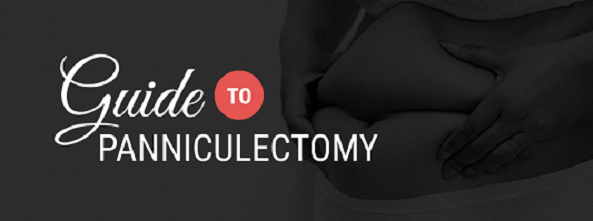
Losing large amounts of weight can feel great. Not only do you feel stronger and healthier, but you are excited to look healthier too. However, some people are startled to find out that extreme weight loss — such as that from weight loss surgery — may not leave them looking as tight and toned as they'd expected.
If you've recently lost a lot of weight, you may have been left with a large flap of skin — sometimes referred to as the "apron" or “pannus” — that falls below your belly button. For many people, this can temper the excitement over their significant weight loss. Not only does it look strange, but, depending on how big this flap of skin is, it might cause pain and discomfort as well. When this happens, you might start wondering if the weight loss and surgery were really worth it.
It doesn't have to be this way!
The truth is, when this happens, the solution may be what is called a panniculectomy.
At Southern Plastic and Reconstructive Surgical Institute, Dr. Nathan Brought provides panniculectomy surgery to qualified candidates in the greater Nashville area.
What to Know About Panniculectomy
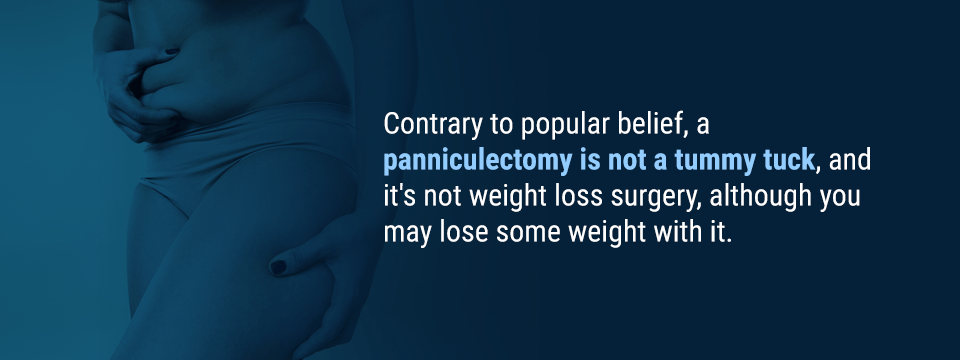
First of all, let's start with what a panniculectomy is not. Contrary to popular belief, a panniculectomy is not a tummy tuck, and it's not weight loss surgery, although you may lose some weight with it.
A panniculectomy is a surgical procedure designed to remove the pannus from your lower abdomen. The pannus — or "apron" — is extra tissue and skin that has been left behind after you've lost weight. Even though it will make the stomach appear to be flatter, it does not tighten any of the abdominal muscles, which is one of the ways it differs from a tummy tuck. A panniculectomy involves the excess tissue below the umbilicus(belly button). Any tissue from that area and above is almost always considered cosmetic by insurance companies.
While there are some visual benefits to a panniculectomy, most of its benefits aren't related to appearance, which is another way that it varies from a tummy tuck. When a person has lost a lot of weight, the pannus that is left behind can be uncomfortable. As it folds over itself and the body, it can be challenging to keep clean, resulting in foul body odor, rashes, sores or even yeast infections. If it is large enough, it can also cause lower back pain. While panniculectomy has been considered an elective procedure in the past, many people are discovering that it is becoming increasingly necessary for people who have completed weight loss surgery or otherwise lost extreme amounts of weight.
What Does Panniculectomy Entail?
A board-certified plastic surgeon performs a panniculectomy. It typically takes 2-4 hours to complete, and patients undergo general anesthesia during the procedure. During a panniculectomy, the surgeon typically utilizes the same type of incision which seen in a tummy tuck below the bikini line. The size of the incisions will depend on how much skin and tissue needs to be removed. Once all of the extra skin and fat are removed, then the tissues and skin are pulled back together and stitched up.
In some cases, surgeons may insert drains to remove excess fluid after the procedure. The belly button is typically not affected during a panniculectomy unless performed in combination with a complete tummy tuck or abdominoplasty. You won't wake up to any surprises.
Schedule A Panniculectomy Consultation TodayWhen Should I Get Panniculectomy?
Often, panniculectomy becomes necessary after a person has experienced significant weight loss, such as the kind that comes after bariatric surgery. Post-pregnancy can also create the need for this procedure, although this is not the most common reason for it. However, it's important to note that a panniculectomy won't be as successful if a person's weight changes significantly after the procedure. This means it should be performed once the individual decides they have nearly reached their weight loss goals and plan to maintain the same healthy weight long-term.
While money shouldn't be the deciding factor when it comes to this procedure, it is an important consideration when deciding if it's time for this procedure. Having the funds available or having the insurance coverage for the procedure is an important part of determining when to move forward. Later on, we'll also discuss the financial implications of panniculectomy and the options available to you to help pay for this procedure.
Who Is a Good Candidate for a Panniculectomy?

Not every candidate is right for panniculectomy surgery. If you have recently lost a lot of weight and adhere to healthy diet and exercise habits — and have kept the weight off for at least one year — that is a great start. Those who maintain a stable weight will enjoy better results, which can be permanent with regular diet and exercise.
The reasons to get panniculectomy vary, but, in general, a good candidate for the procedure is someone who is:
- Realistic about the outcome
- Bothered by the way their abdomen looks
- Experiencing recurring infections or rashes under the excess skin on their abdomen
- Experiencing back pain related to the extra skin they carry
- At a stable weight
- Overall healthy
- A non-smoker
It's important to note all of these criteria, however, pay careful attention to the requirement that a candidate is a "non-smoker." Smoke from cigarettes can impact the body's blood supply and its ability to heal wounds. If an active smoker undergoes this procedure, they are at high risk for complications during recovery. This is why it is so important that you be a non-smoker or quit smoking well before this surgery takes place. Be honest with your doctor about your smoking status from the beginning. Your health and safety could be on the line if you aren't.
Individuals with lung disease, diabetes or cardiovascular disease, as well as those still considered obese, may also not be good candidates for this procedure. Disclose any preexisting conditions to your surgeon before the procedure so they can help you make the best decisions moving forward.
Contact UsHow to Prepare for a Panniculectomy
The preparation for a panniculectomy is similar to that for any surgery. Lab tests may be conducted to determine your health for undergoing the procedure and to create baseline data. You will be instructed to stop taking certain medications prior to surgery, and then you will have to fast for the last several hours before the procedure.
Perhaps more important in your preparation is what not to do. In the weeks leading up to your surgery, you want to maintain a consistent routine to keep your weight and other vitals stable. This is not the time to try to lose a few more pounds or to let your diet go and end up gaining additional weight. Managing your stress before the operation will produce the best outcome.
Looking to get a panniculectomy in near Nashville and Franklin, TN? Contact Dr. Brought for a consultation if you think a panniculectomy could be right for you.
The Cost of Panniculectomy
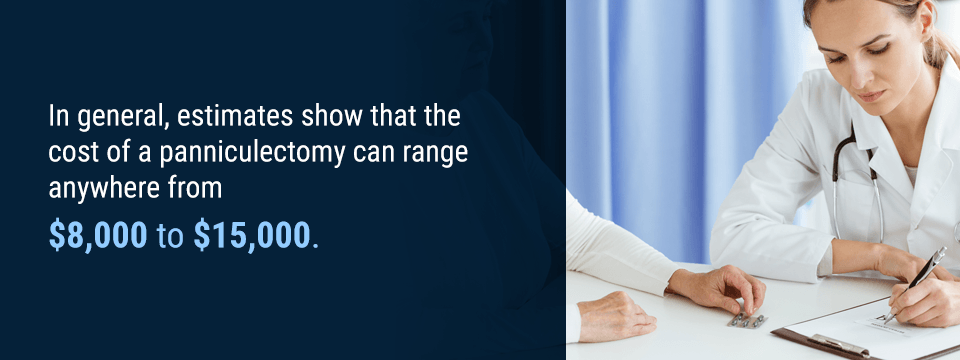
In general, estimates show that the cost of a panniculectomy can range anywhere from $8,000 to $15,000. However, it's hard to put an exact figure on the cost of a panniculectomy because prices vary, as does insurance coverage. While a panniculectomy used to be viewed by insurance companies as an elective cosmetic procedure, more and more companies realize this procedure is a medical necessity for many people. This is because of the sores and infections that this flap of skin can cause. As a result of this, many insurance companies changed their coverage policies and now cover the procedure.
No one should have to live in discomfort just because they can't afford it. While coverage can vary between plans and companies, if you are interested in a panniculectomy or a plastic surgeon recommends it to you, it's important to talk with your insurance company to determine whether they'll cover the procedure. If your insurance company will not cover the procedure, talk with your plastic surgeon's office. Many offer financing options that can help ease your financial concerns over the procedure.
In general, the cost of a panniculectomy depends on the plastic surgeon's rates, as well as where they're practicing. Other costs associated with the procedure may include:
- Anesthesia
- Post-op medications
- Facility or hospital costs
- X-rays or other required tests
- Post-surgical garments
While understanding the costs associated with a panniculectomy are important, they should never be used as a determining factor when selecting a surgeon for the procedure. A surgeon's certifications and reputation are much more important than the amount of money they charge for a procedure. Make sure you do your homework and select a reputable surgeon you can trust.
Risks of Panniculectomy
Overall, panniculectomy is a safe procedure that has ultimately helped many people. However, as with any surgical procedure, there are some risks. These can include:
- Swelling
- Numbness
- Persistent pain
- Bleeding at the wound site
- Scarring
- Blood clots
- Infection
- Nerve damage
- Accumulation of fluid
Recovering From a Panniculectomy
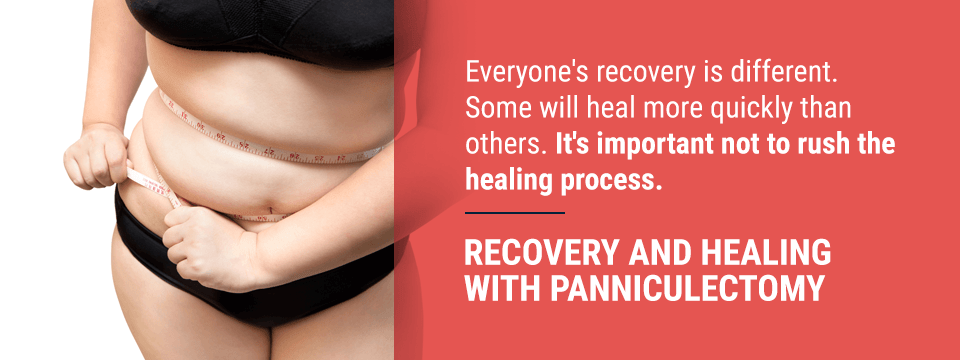
In some special cases, if your surgery was especially extensive, your surgeon may ask you to stay overnight for observation. However, the good news is that a panniculectomy is typically done as an outpatient procedure. General anesthesia is used during the procedure, so you will be groggy when it ends. Plan to have someone on hand to drive you home after the procedure is done.
You will experience some discomfort and pain around the surgical site in the days following the procedure. There may be some bruising and swelling in this area which can contribute to your pain. While it will gradually improve, it will be at least a couple of weeks before you are nearly pain-free. You'll want to avoid heavy lifting and strenuous activity, so if you don't live with another adult, you'll want to ask a friend or relative you trust to stay with you and help for the first few days after the procedure.
The vast majority, if not all of the sutures will be absorbable and will not need to be removed, but expect your full recovery to take several months to achieve the results you want. Make sure to talk with your surgeon before the procedure to make sure you understand their follow-up procedures and recovery guidelines.
If you experience any of these after panniculectomy, you should immediately call your surgeon.
Recovery and Healing With Panniculectomy
Everyone's recovery is different. Some will heal more quickly than others. It's important not to rush the healing process. You're looking for a long-term solution, not a quick fix. In the first few weeks after your surgery, you will not be able to see the full results because you will be less active and you'll also experience some swelling around your abdomen and the incision. Don't worry. It's completely normal. Within a couple of weeks, you should be back on your feet, and you'll see a noticeable — and beautiful — difference in your appearance.
If you've had other abdominal surgeries in the past — such as a cesarean section — you may find that your older scars have disappeared or been incorporated into your new panniculectomy scar. Over time, your new scar will fade. While we can't promise it will disappear completely, you will notice a difference in its appearance over time.
It's important to be diligent in following the instructions your surgeon gives you after panniculectomy. The long-term results can be impacted by a number of factors, including motion during your recovery period. Even if you're feeling good, make sure you take it easy and don't do anything to bump or injure the surgical area.
During recovery, if you experience irregular heartbeat, chest pains or shortness of breath, you should seek medical attention immediately. While rare, these complications can occur and require immediate attention from a medical professional.
Choosing the Right Plastic Surgeon
When considering panniculectomy, you'll want to select a plastic surgeon who is board-certified. It's important to pick a surgeon who is reputable both in general plastic surgery procedures, as well as panniculectomy specifically. You'll also want to do some research to find reviews from their other patients. In this day and age, online reviews are often plentiful, although you'll want to make sure you rely on a reputable review site for good, detailed opinions you can trust.
Once you find a plastic surgeon who you believe is a good fit, schedule a consultation. During the consultation, don't be afraid to ask to see before and after photos of their previous panniculectomy patients. In the field of plastic surgery, the evidence of good quality work is in the photos. A reputable surgeon will be able to provide these photos on demand and, even though you might feel awkward asking, they won't consider it an unusual request.
Consider SPRSI for Your Panniculectomy

When it comes to panniculectomy, the good news is that there is a lot of information available to help you make wise, informed decisions. However, having so much information at your fingertips can also be overwhelming.
A panniculectomy is not a tummy tuck. It is not to make you look svelte or like you live at the gym. It is not a procedure you should take lightly.
Panniculectomy is an important and medically necessary procedure for people who are struggling with the extra skin after extreme weight loss. It is a solution to foul odors, rashes and lower back pain that result from having so much excess skin and tissue hanging from your abdomen.
If you are interested in exploring how a panniculectomy can change your life, consider the Southern Plastic and Reconstructive Surgical Institute. The home of board-certified plastic surgeon Dr. Nathan Brought, SPRSI offers a holistic approach to health for clients in and around Nashville, Tenn. SPRSI recognizes that not every person is a candidate for every procedure and, through careful and compassionate evaluation, SPRSI and Dr. Brought strive to help patients understand their options and then provide the highest quality of services possible.
In addition to panniculectomy, Dr. Brought has experience in a wide array of reconstructive and cosmetic procedures, from body contouring methods such as liposuction to minimally-invasive techniques like Botox.
Let SPRSI help you get started on a journey to better health. Call or email today to schedule a consultation.
About SPRSI
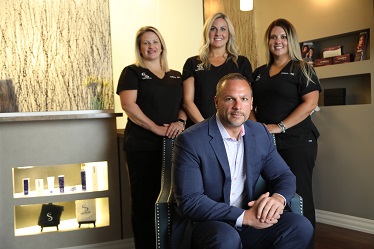
Nathan Brought, DO and SPRSI serves clients in the Nashville, Tennessee region. In addition to panniculectomy, Dr. Brought performs facelift, breast, liposuction, eyelid surgery, and abdominal surgery. He is a graduate of the Lake Erie College of Osteopathic Medicine. He’s also a member of the Tennessee Society of Plastic and Reconstructive Surgeons, the Tennessee Osteopathic Medical Association, the American College of Osteopathic Surgeons and the American Osteopathic Association.
For a panniculectomy consultation, call Dr. Brought and SPRSI at 615.791.9090.
Information on Other Body Procedures
- Abdominoplasty/Tummy Tuck
- Weight Loss Surgery
- Thigh Lift
- Liposuction
- Labiaplasty
- Fat Transfer/Grafting
- Buttocks Augmentation
- Arm Lift
- Mommy Makeover Surgery


